At the Cathedral of Our Lady of the Angels, Dec. 29 wasn’t too early for a certain kind of New Year’s celebration.
As bells rang and hundreds gathered around a stage in the Cathedral Plaza amid stubborn morning fog, the countdown was over: it was time to open the Jubilee Holy Year, celebrated every 25 years by Catholics around the world.
The event began in the Plaza with a special rite before 10 a.m. Sunday Mass, officially launching the “Jubilee of Hope” in the Archdiocese of Los Angeles days after Pope Francis did the same by opening the Holy Door of St. Peter’s Basilica in Rome.
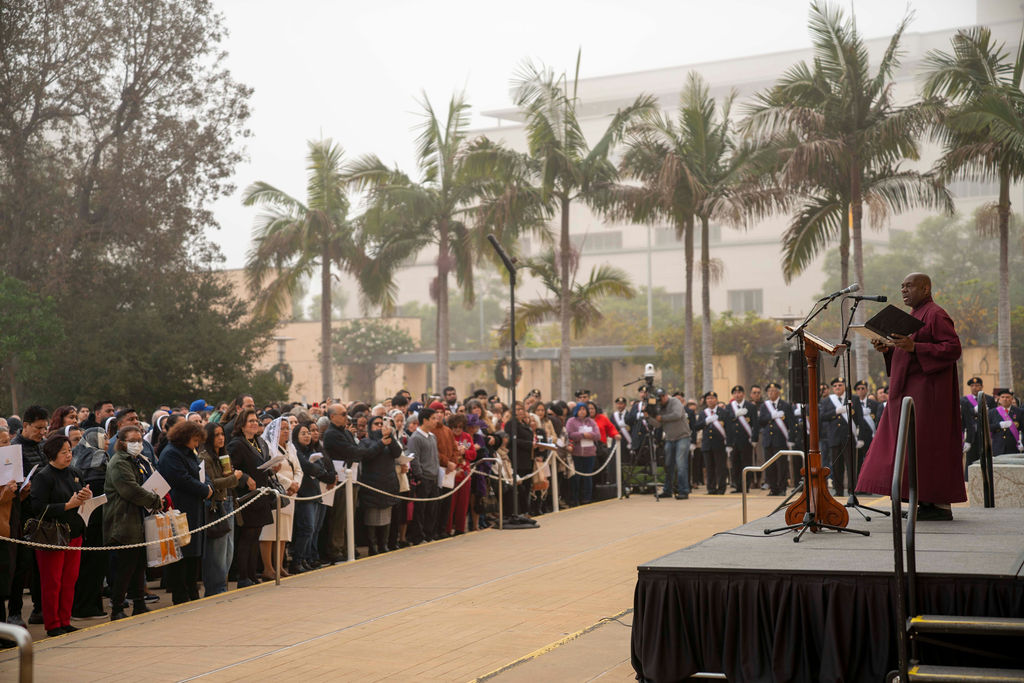
“This rite is for us the prelude to a rich experience of grace and mercy,” proclaimed Archbishop José H. Gomez, moments before leading nearly 3,000 Massgoers in procession into the Cathedral. “We are ready to respond always to whoever asks the reason for the hope that is in us, especially in this time of war and strife.”
The Catholic Church celebrates a Jubilee Holy Year every 25 years echoing the biblical tradition of setting aside a “year acceptable to the Lord” marked by the cancellation of debts, release from labor, and forgiveness among enemies.
Every Jubilee, said Archbishop Gomez later in his homily, “reminds us that we are all on pilgrimage.”
“Our life’s journey is now a journey of faith,” said the archbishop. “With Jesus at our side, walking by his Spirit, we are on pilgrimage to his Father’s house, to the heavenly kingdom, where we will discover the love that never ends.”
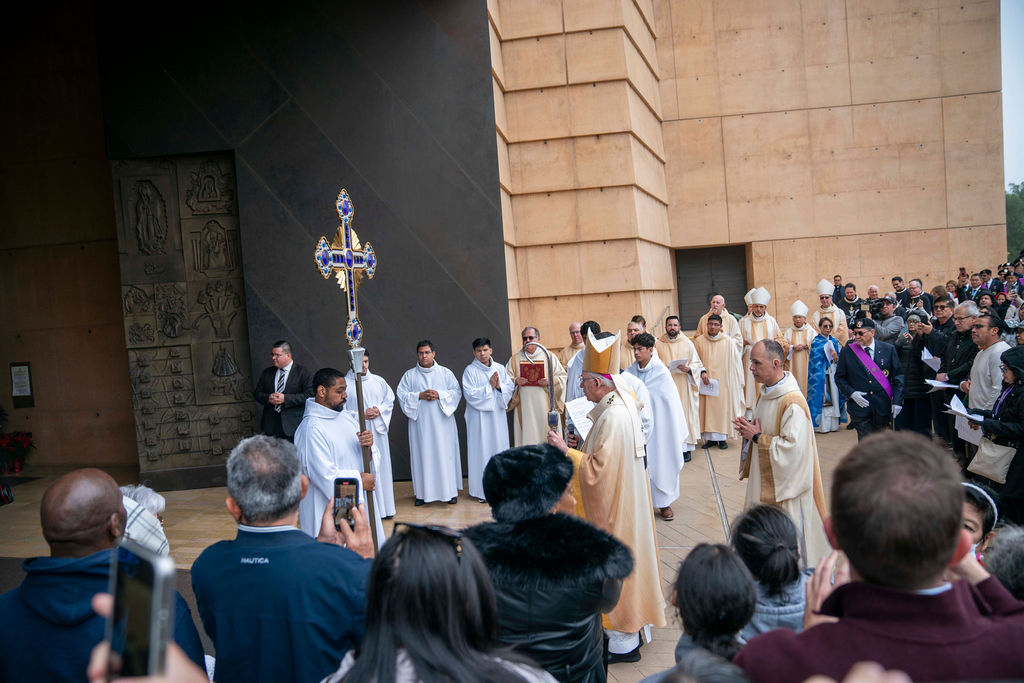
Outside of the 25-year cycle, there have been two recent, but slightly different, jubilees celebrated in LA.
One was the extraordinary Jubilee of Mercy, unexpectedly called by Pope Francis in 2015 to emphasize the theme of mercy. The other was the local “Forward in Mission” jubilee year held in 2022-2023 to mark 250 years since the founding of Mission San Gabriel Arcángel, the first Catholic outpost in the Los Angeles area.
But unlike those two jubilees, the 2025 one will have a key difference: no designated local “Holy Door” for Catholics to pass through in their local dioceses.
To obtain the plenary indulgence (which removes the temporal punishment due to sins already forgiven) traditionally associated with a jubilee, Pope Francis decreed that Catholics can either make a pilgrimage to one of five Holy Doors in Rome (including one at a prison) or choose from a few options closer to home, including performing an “extraordinary” work of mercy for someone in need.
In the Archdiocese of Los Angeles, there is the option of visiting the Cathedral or Ventura’s Mission Basilica San Buenaventura. Special local Jubilee events being planned include a six-mile walking pilgrimage from All Souls Church in Alhambra to the Cathedral on April 5.
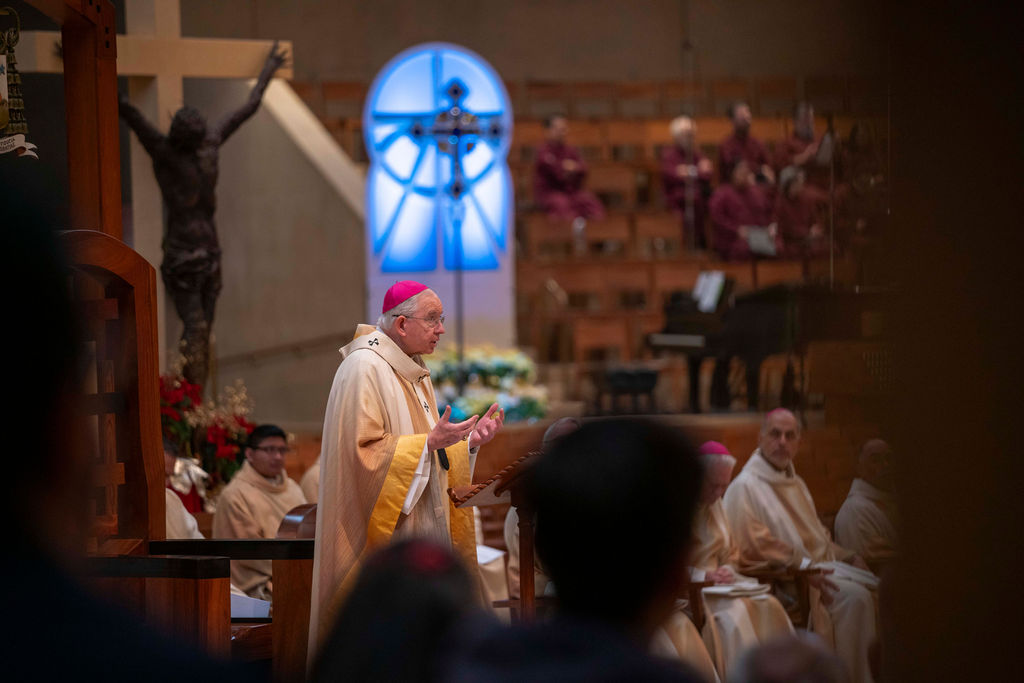
At the same time, “it’s not so much about a place, it’s a time of renewal, a time for us to get closer to God,” explained Father Juan Ochoa, director of the archdiocese’s Office of Worship and a lead planner of LA’s Jubilee celebrations. “God’s mercy cannot be limited to a place.”
Still, the packed pews at the Jubilee Mass — which coincided with the Feast of the Holy Family — suggested the Cathedral was the place to be on Sunday.
After the introductory rites in the plaza, Archbishop Gomez followed an ornate processional cross used 22 years ago during the dedication of the Cathedral.
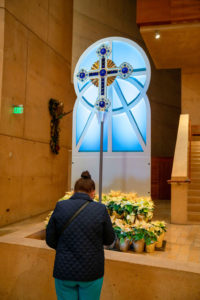
Once it had reached the Cathedral sanctuary, the cross was installed near the choir area. It will remain there on display for veneration until the close of the Holy Year in 2026, a sign “that the cross of Christ is a firm anchor of hope.”
Visitors in need of that hope were not hard to find that morning.
After watching news coverage of Pope Francis opening the Holy Door in Rome, Janet Sanchez decided to make the drive from Ontario to be a part of something similar. She came with her 24-year-old daughter Emilyn, who suffers from multiple brain tumors that cause epileptic convulsions.
“I have more hope,” after hearing Pope Francis’ words on TV and coming to the Cathedral Mass, said Sanchez. “We’re praying a lot that she be healed.”
Sanchez said she’d begun to experience true hope in the suffering, noting that the illness has united her family and given them a sense of peace — even as they await the start of radiation treatment aimed at shrinking the tumors.
“We’re leaving everything in God’s hands, that his will be done,” said Sanchez. “Already we’re seeing doors open.”
Joel and Nadia Moreira, parishioners at Christ the King Church near Hollywood, saw the Jubilee Year as an opportunity to “grow in faith” and take the task of transmitting the faith to their four-year-old son more seriously.
“We want to raise our child the right way, with God’s love,” said Nadia. “Unfortunately, the things we’re seeing now, we weren’t really seeing when I was growing up, and now I really don’t want my son to be getting into bumps.”
Joel, a self-described “cradle Catholic” who says he only recently “discovered” his faith personally, sees a need to take the hope of Christianity to whoever needs it, including people in his life who have fallen away from the faith.
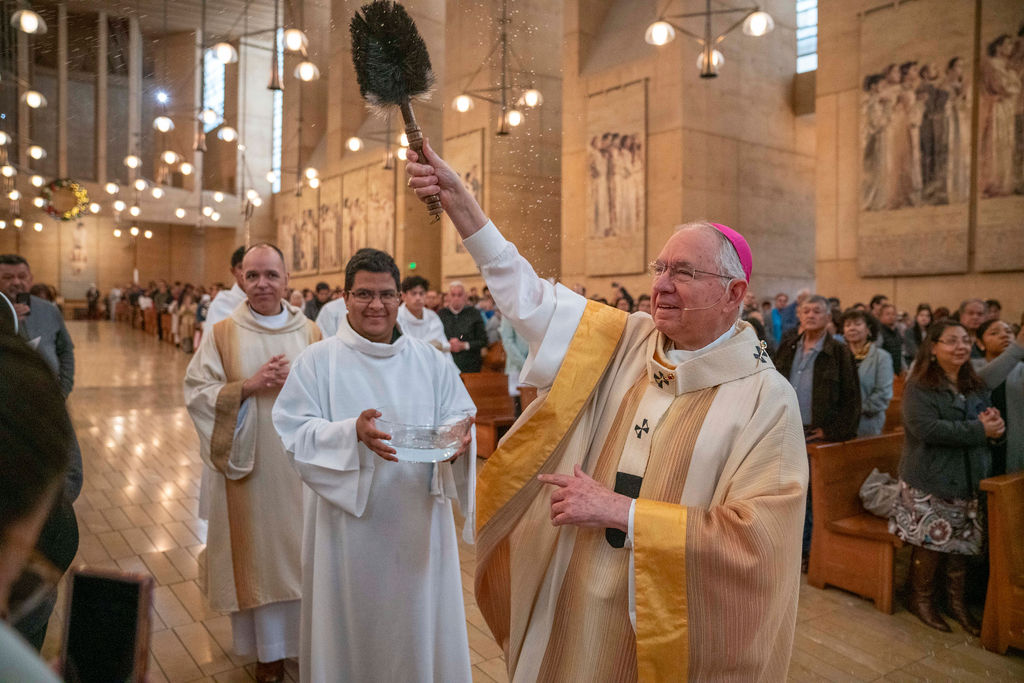
“It’s not just a New Year, it’s a Jubilee Year,” Joel told Angelus as he brought his family to venerate the processional cross after Mass. “We can take that hope and bring it to those who might, because of their past, not want to walk into a church. But God is a God of mercy, and he loves us all as his children.”
At the center of every Jubilee celebration, stressed Ochoa, is the chance to experience the forgiveness of our sins and “recognize that a new beginning is given to us,” even in the so-called “cancel culture” of modern society.
“It’s an opportunity for people to recognize that God does not cancel people, God cancels our sins,” said Ochoa. “This is the purpose of a Jubilee year.”
For information about 2025 Jubilee events in the Archdiocese of Los Angeles, visit Hope.lacatholics.org/holy-doors.